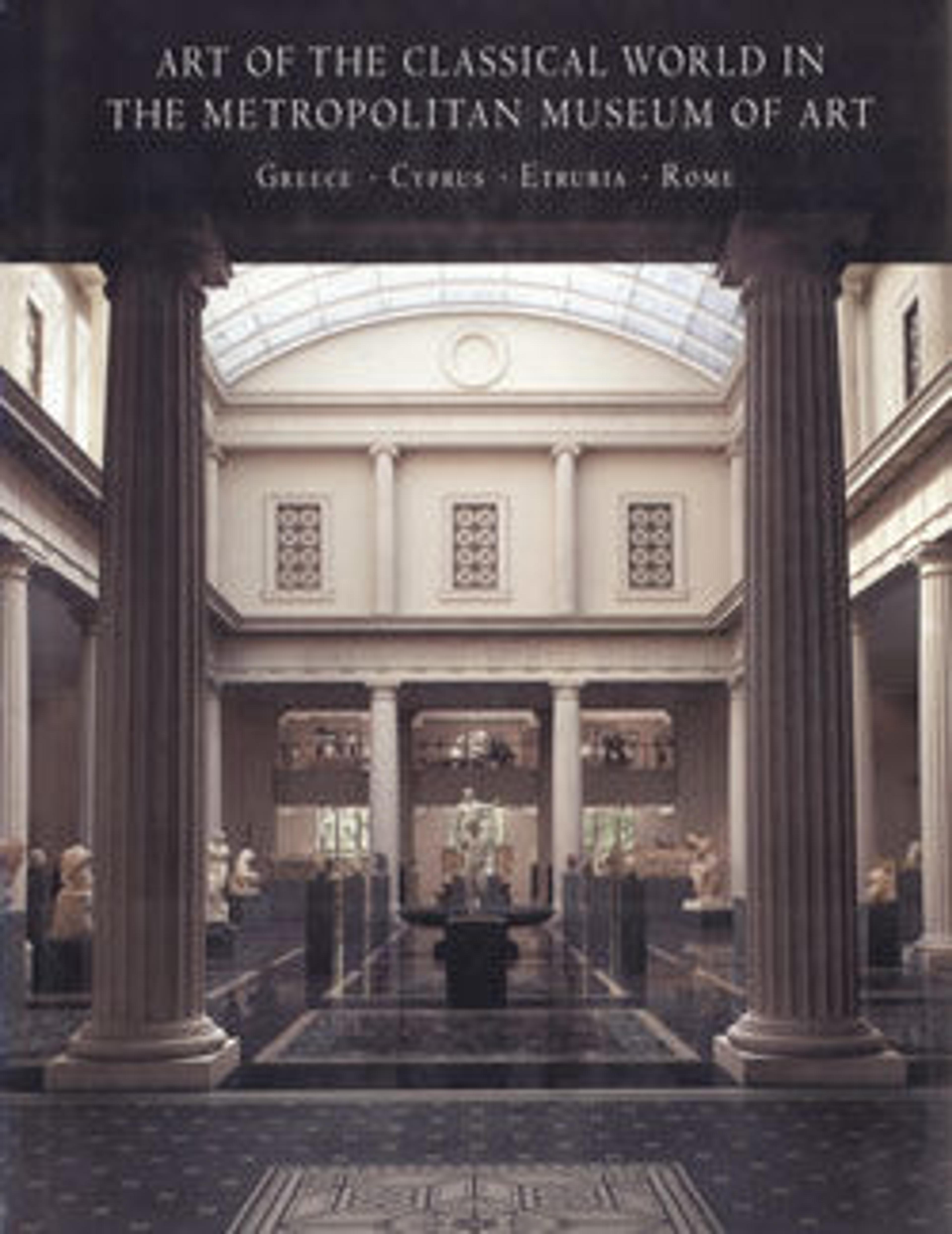Terracotta volute-krater (bowl for mixing wine and water) with stand
On the neck, obverse and reverse, Dionysos, the god of wine, and his followers, satyrs and maenads
The architectonic character of this volute-krater is as great as that of the adjacent one, but the detail is quite different. The figure work on the neck constitutes a crowning frieze. The ribbing on the body introduces a pronounced verticality, and the crisp forms of the stand establish a podium. The small, agile figures of Dionysos and his retinue animate this otherwise sober and imposing ensemble.
The architectonic character of this volute-krater is as great as that of the adjacent one, but the detail is quite different. The figure work on the neck constitutes a crowning frieze. The ribbing on the body introduces a pronounced verticality, and the crisp forms of the stand establish a podium. The small, agile figures of Dionysos and his retinue animate this otherwise sober and imposing ensemble.
Artwork Details
- Title:Terracotta volute-krater (bowl for mixing wine and water) with stand
- Period:Classical
- Date:ca. 430 BCE
- Culture:Greek, Attic
- Medium:Terracotta; red-figure
- Dimensions:Overall: 18 1/16 x 13 in. (45.8 x 33 cm)
Other (H. of krater and stand): 26 1/4 in. (66.7 cm)
Other (H. of stand): 5 1/4in. (13.3cm)
Other (H. of krater without handles): 18 1/16in. (45.8cm)
Other (Diameter of foot): 8 15/16 in. (22.7 cm)
Other (Diameter of mouth of vase): 12 1/4 in. (31.1 cm) - Classification:Vases
- Credit Line:Fletcher Fund, 1924
- Object Number:24.97.25a, b
- Curatorial Department: Greek and Roman Art
More Artwork
Research Resources
The Met provides unparalleled resources for research and welcomes an international community of students and scholars. The Met's Open Access API is where creators and researchers can connect to the The Met collection. Open Access data and public domain images are available for unrestricted commercial and noncommercial use without permission or fee.
To request images under copyright and other restrictions, please use this Image Request form.
Feedback
We continue to research and examine historical and cultural context for objects in The Met collection. If you have comments or questions about this object record, please contact us using the form below. The Museum looks forward to receiving your comments.
